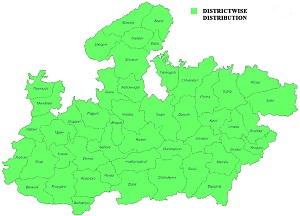|
Diagnostic characters:
|
| Body robust; dorsoventrally flattened; snout elongated; nostrils open as an oblique slit, more close to the eye; neck elongated; tail long whip like and laterally compressed; tongue is very long, forked and protrusible. Juveniles olive-green or dark-greyish with yellow transverse bands. Adults grey or brown with light transverse bands on body and tail; head with light marking, belly yellowish or brownish. SVL: 1800mm. |
| Habit and Habitat: |
| Diurnal; burrowing habits; found in scrub forests to evergreen forests. Mostly in plantation area, inside caves, termite mounds, burrows, hollow old trees, nallah, under stones and boulders in dense vegetation bordering marshes, ponds, canals and tanks |
| Diet: |
| Feeds mainly on insects, small mammals, snakes, lizards and vegetable matter. |
| Legal Protection: |
| WL (P) A, 1972-Shedul I. |
| Conservation status and Threats: |
| Least Concern. Uncommon. Cruel killing and trade. |
 |
Distribution: Madhya Pradesh: Throughout. Elsewhere India: Throughout. Elsewhere outside: Iran, Russia, Afghanistan, Pakistan, Nepal, Myanmar, Bangladesh and Srilanka |
|